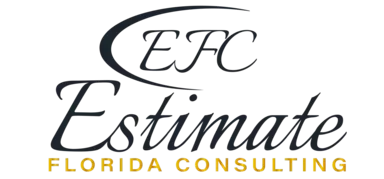Building the Future: Tenants Are Now Co-Designers, Not Just Occupants
Until recently, for tenants, moving into a brand-new building felt a bit like crashing someone else’s party; the developer set the theme, the architect chose the playlist, contractors decorated, and tenants just showed up at the end without a say in much at all. Today, however, the people who will actually use the space – whether they’re software engineers, café owners or families with a hoard of rambunctious kids – are getting their hands on the blueprints long-before the first shovel hits dirt. Tenants are no longer mere key recipients; they’re fast-becoming co-authors of the building itself.
Why Tenants Suddenly Matter So Much?

It’s natural to assume this is all about prettier paint colors, but the real reasons actually run much deeper:
Productivity & Well-Being
According to a 2022 Gensler Workplace Survey, employees are far more eager to return to offices that help them focus, collaborate and recharge. If the layout doesn’t serve those goals, why not just keep working from the couch?
Sustainability & Cost
Tenants are now asking a lot more questions: ‘How big is the carbon footprint? What will my utility bills look like?’ Naturally, buildings that can answer those questions confidently tend to enjoy higher renewal rates – and stronger word of mouth.
Long-Term Value
A space that fits like a glove today – and can be re-tailored tomorrow – stays profitable longer. That’s music to a developer’s ears.
From Top-Down to Side-By-Side
Old Playbook: The developer dreams, the architect sketches, the contractor builds and the tenant adapts (and often renovates).
New Playbook: Tenant dreams with the developer, architects iterate in real time, a contractor builds once – and there are no signs of jackhammers six months later.
Big corporations actually started this trend. Apple Park’s endless glass curves came out of countless feedback loops with Apple’s leadership, while Amazon’s HQ2 team crowdsourced input from employees on everything from desk layouts to neighborhood bike paths. But it isn’t just tech behemoths anymore; midsize firms and lean startups want flexible floor plates, plug-and-play partitions and amenity cores that grow with them.
Why Developers Are All In?
At first glance, inviting tenants to design meetings might sound like longer timelines are an inevitability. In reality, it’s actually risk insurance:
Lower Vacancy
JLL (2022) found projects that secure anchor tenants during design enjoy 20-30% higher first-year occupancy than speculative builds.
Quicker Payback
CBRE’s 2023 Office Occupier survey shows 44% of Asia-Pacific companies expect to expand their real-estate footprint; if a growth-minded tenant is locked in early, the rent keeps rising without extra marketing spend.
Fewer Costly Re-Do’s
Change orders (the bane of budgets) plummet when tenants have a meaningful hand in finalizing the first draft.
Net-Zero or No Deal
Sustainability isn’t just a trendy perk anymore; it’s table stakes. Giants like Salesforce and Microsoft won’t sign a lease without a clear path to carbon neutrality – we’re talking rooftop solar, geothermal loops and dynamic glass. LEED Gold certification? Many tenants see anything less as outdated. McKinsey’s 2023 Global Energy report underlines why owners are happy to comply: lower operating costs bump net operating income and, ultimately, property valuation.
The Residential Ripple Effect

It’s natural to assume this is all about prettier paint colors, but the real reasons actually run much deeper:
Co-Living 2.0
Brands such as Common sketch out communal kitchens, coworking nooks and resident-led event areas with future renters, so the vibe feels boutique on day one.
Amenity Wars
Hydroponic rooftop farms, pet spas, meditation decks – such perks come directly from resident wish lists. In the 2022 NMHC/Grace Hill survey, 70% of renters wanted smart-home tech, while 65% listed sustainability features as must-haves.
Shape-Shifting Units
Sliding walls, fold-out furniture and generous shared lounges allow young professionals to pivot lifestyles without moving every year.
Where the Road Gets Bumpy?
- Longer Pre-Build Phases: VR walkthroughs and BIM iterations add weeks up front but save months later
- Regulatory Lag: Zoning codes don’t always account for rooftop beehives or indoor tree groves
- Conflicting Wish Lists: Tenants upstairs crave a skylit server farm; downstairs neighbors beg for monk-like quiet. Project managers now double as diplomats
Proptech helps: AI layout engines balance everyone’s needs, digital twins forecast energy loads, landlord software centralizes tenant feedback in real time, and blockchain leases slash paperwork.
The Conversation That Builds Better Buildings
The old adage, ‘build it and they will come’ has morphed into ‘build it with them and they’ll stay.’ Tenants today are informed, values-driven and perfectly willing to look elsewhere if ignored. Developers who open the sketchbook early, stay nimble and treat co-creation as a non-negotiable won’t just fill their buildings – they’ll future-proof them.
The blueprint, in other words, is no longer a stone tablet; it’s a living Google Doc shared between investors, designers, contractors, and, most crucially, the people who will sleep, innovate and day-dream inside those walls. That’s the kind of collaborative foundation most likely to stand the test of time.

